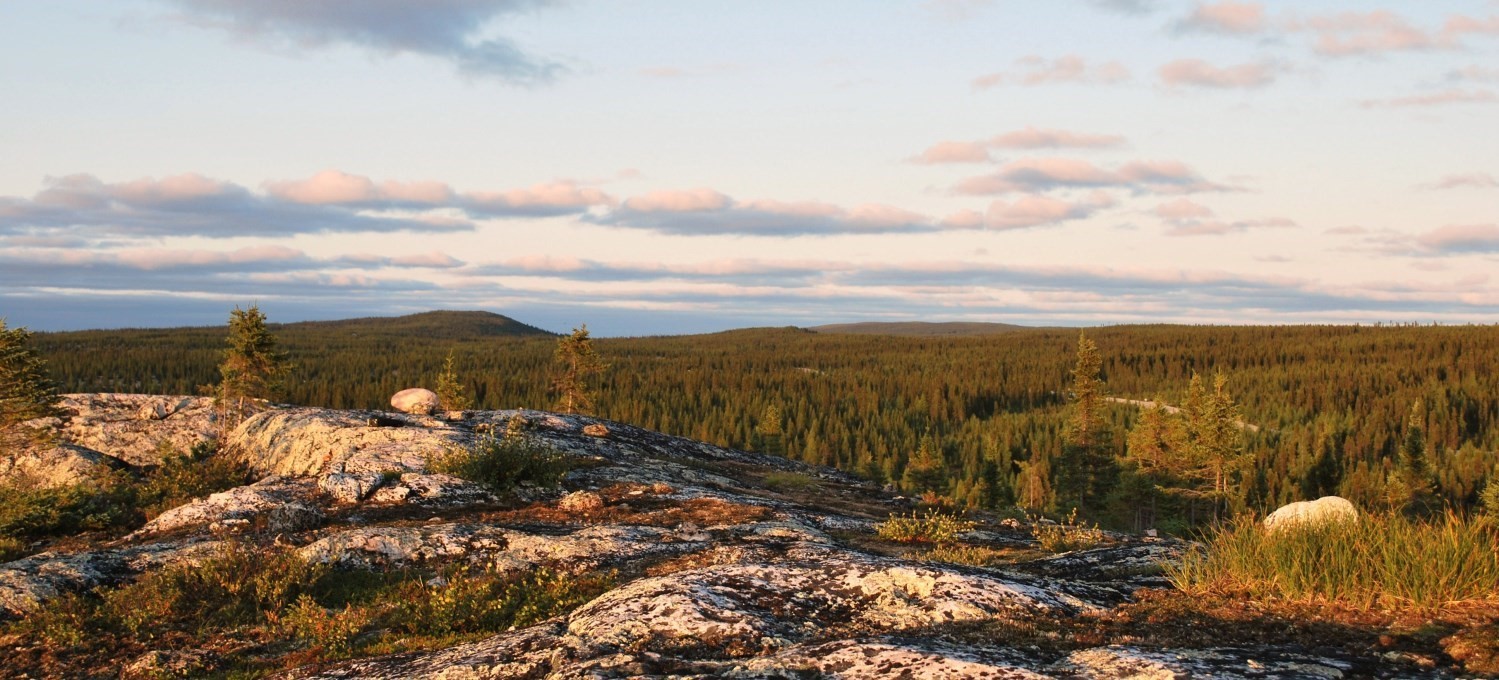
Background
Subdivision of the Northeastern Superior Province (NESP) into subprovinces and separate geological and geophysical domains served as the basis for the development of a regional tectonomagmatic model (Percival and Skulski, 2000; Percival et al., 1992, 2001). These authors suggested that the different domains of the Minto Subprovince are “lithotectonic terrains” juxtaposed by lateral accretion. However, some studies rather suggest a model based on vertical tectonics (Bédard et al., 2003; Bédard, 2006). Between 1997 and 2003, the Far North program was one of the most ambitious geological mapping initiatives carried out in Quebec. This program’s mapping work have resulted in some modifications to the previously proposed NESP subdivision, and have challenged the importance of domains in the evolution of the craton. This work highlighted the existence of two distinct large terranes, one in the north (Arnaud River Terrane) and the other in the south and west (Hudson Bay Terrane), which evolved differently over time (Leclair, 2008a).
Description
The NESP terranes were defined from geochronological and isotopic data, as well as from the main stratigraphic assemblages that compose them. They may span several domains or subprovinces. The Hudson Bay Terrane comprises the southern and western portions of the Minto Subprovince and includes the Bienville, Goudalie and Tikkerutuk domains. It also extends further south in the La Grande Subprovince.
Geology
The Hudson Bay Terrane is characterized by the presence of the remains of an ancient crust older than 2.9 Ga. At the western end of the Tikkerutuk Domain, volcanic and plutonic rocks of the Nuvvuagittuq Belt yielded crystallization ages between 3.8 and 3.6 Ga. Elsewhere in this terrane, some tonalitic gneiss klippes gave ages ranging from 3.0 to 2.9 Ga, and several inherited zircons contained in younger intrusive rocks gave ages ranging from 3.2 to 2.9 Ga. Isotopic studies generally reveal enriched signatures suggesting contamination of magmas by a sialic crust and allowing calculation of model ages ranging mostly from 2.9 to 3.6 Ga. The eastern portion of the Hudson Bay Terrane consists of volcanic (Gayot Complex) and tonalitic (Brésolles and Suluppaugalik suites) rocks that belong to the period between 2.9 and 2.8 Ga. Remnants of the period between 2.8 and 2.76 Ga are rather sparse and very localized. One of the main features of the Hudson Bay Terrane is the presence of large tonalitic units (Fayard and Coursolles suites) spanning the entire area and testifying to large tonalitic magmatism from 2.76 to 2.74 Ga (Leclair, 2008a).
Geological Evolution
The model favoured for the evolution of the Northeastern Superior Province (NESP) involves the formation of ancient cratonic nuclei (3.9-2.9 Ga; Hudson Bay Terrane) and domains composed of volcanic and intrusive rocks derived from a younger juvenile crustal source (<3.0 Ga; Arnaud River Terrane). Integrating geochronological (U/Pb) and isotopic (Nd) data with results of geological surveys from the Far North program determined the extent of reworked paleocratons and the geographic distribution of stratigraphic units related to different geological evolution periods. A juxtaposed comparison of the chronostratigraphy of the Hudson Bay and Arnaud River terranes indicates that these two areas experienced a distinct geological evolution up to ~2.74 Ga (temporal representation before 2.74 Ga and schematic of the various geological evolution events). The Hudson Bay Terrane was formed from the remains of an evolved Eoarchean to Mesoarchean sialic crust, while the Arnaud River Terrane was formed from a primitive Mesoarchean oceanic crust. Ancient volcanic rock and tonalitic gneiss complexes have been affected by successive intrusions of tonalite-trondhjemite (TTG) to the early Neoarchean (~2.74 Ga). Subsequently, the two terranes followed a similar geological evolution characterized in particular by potassic (granite and granodiorite) and charnockitic (pyroxene granitoids) plutonism that spread throughout the NESP (temporal representation after 2.74 Ga). This plutonism, younger than 2.74 Ga, coincides with the main deformation phase responsible for the NW-SE to N-S structural grain (Leclair, 2008b).
References
Publications available through Sigéom Examine
LECLAIR, A. 2008a. CONTEXTE GÉOLOGIQUE RÉGIONAL DU NORD-EST DE LA PROVINCE DU SUPÉRIEUR. DANS : SYNTHESE DU NORD-EST DE LA PROVINCE DU SUPERIEUR. MRNF. MM 2008-02, 198 pages and 8 plans.
LECLAIR, A. 2008b. ÉVOLUTION GÉOLOGIQUE DU NORD-EST DE LA PROVINCE DU SUPÉRIEUR. DANS : SYNTHESE DU NORD-EST DE LA PROVINCE DU SUPERIEUR. MRNF. MM 2008-02, 198 pages and 8 plans.
Other publications
Bédard, J.H. 2006. A catalytic delamination-driven model for coupled genesis of Archaean crust and sub-continental lithospheric mantle. Geochimica et Cosmochimica Acta; volume 70, pages 1188-1214. doi:10.1016/j.gca.2005.11.008
Bédard, J.H., Brouillette, P., Madore, L., Berclaz, A. 2003. Archaean cratonization and deformation in the northern Superior Province, Canada: an evaluation of plate tectonic versus vertical tectonic models. Precambrian Research; volume 127, pages 61-87. doi:10.1016/S0301-9268(03)00181-5
Percival, J.A., Mortensen, J.K., Stern, R.A., Card, K.D., Bégin, N.J. 1992. Giant granulite terranes of northeastern Superior Province: the Ashuanipi complex and Minto block. Canadian Journal of Earth Sciences; volume 29, pages 2287-2308. doi:10.1139/e92-179
Percival, J.A., Skulski, T. 2000. Tectonothermal Evolution of the Northern Minto Block, Superior Province, Quebec, Canada. The Canadian Mineralogist; volume 38, pages 345-378. doi:10.2113/gscanmin.38.2.345
Percival, J.A., Stern, R.A., Skulski, T. 2001. Crustal growth through successive arc magmatism: reconnaissance U–Pb SHRIMP data from the northeastern Superior Province, Canada. Precambrian Research; volume 109, pages 203-238. doi:10.1016/S0301-9268(01)00148-6

